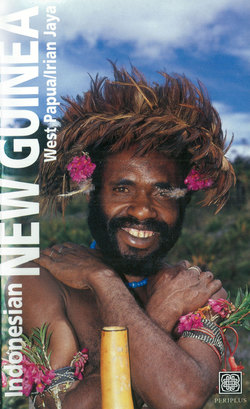Читать книгу Indonesian New Guinea Adventure Guide - David Pickell - Страница 8
На сайте Литреса книга снята с продажи.
ОглавлениеPART I
Introducing
West Papua
As the 19th century wound down, only one of the world's great lands still remained cloaked in mystery: New Guinea. Here was a place where pulp writers could indulge their fits of fancy, populating this great unknown island with strange beasts and even stranger people, and no one could yet prove otherwise.
The Baliem Valley, where agriculture had been going on for 9,000 years, and which supported a population density of almost 1,000 people per square kilometer, first felt the gaze of an outsider in 1938.
Today hardy travelers can still get a special thrill pulling out a good, U.S.-produced flight map of West Papua (formerly Irian Jaya) and seeing the words "Relief Data Incomplete" printed across great swaths of territory.
West Papua's 2 million people form a patchwork of ethnicities, speaking, by most estimates, as many as 250 distinct languages. The island's great size and rugged terrain have isolated them from one another for thousands of years, and each has developed a distinct culture and lifestyle.
The Dani of the central highlands, perhaps the best-known of the West Papuans, live in communities of tidy little thatch-and-wood huts, surrounded by neatly kept gardens of sweet potato vines. The scene has reminded more than one writer of the farm country of the American Midwest, and as such it is a remarkably incongruous sight on an island otherwise unmarked by the hand of man.
Although the stone axe was unceremoniously abandoned as soon as steel became available a few decades ago, the Dani remain resolute in sartorial matters: penis gourds for men, and fiber skirts for women. Even a concerted effort by the fledgling Indonesian government failed to convince Dani men that pants were superior to their horim.
If the Dani are West Papua's most famous group, the Asmat of the South Coast are the Island's most notorious. Historically, Asmat culture was centered around a cycle of headhunting. Fresh enemy heads were necessary to bring about the periodic spiritual rejuvenation of the village.
As long ago as 1770, Captain Cook's landing party was sent packing from their territory with volleys of arrows and frightening bursts of lime, but the Asmat's most famous victim may have been Michael Rockefeller, who disappeared after his boat capsized off the southern shore in 1961. He could just as well have met a more prosaic death by drowning, however, or been devoured by a saltwater crocodile.
Today, the mention of cannibalism—or ritual warfare in the highlands—yields embarrassed smiles and shrugs, and it has of course been banned by the government. But there are still pockets of this great island where the missions and government haven't yet reached, and no one can say what cultural practices exist there.
Modernization, and tourist infrastructure, have come to West Papua, if in a much more limited way than in western Indonesia. Wamena, in the heart of the Baliem Valley, is an hour-long, daily flight from Jayapura, West Papua's bustling and modern capital on the North Coast. Other points, including the swamps of the South Coast, require quite a bit more patience and organization.
The rewards of a visit to West Papua are manifold: snorkeling in the clear, coral-filled waters off Biak; smoking a clove cigaret and cracking pandanus nuts in a warm hut in the highlands; or laying back in a canoe, a livid sunset lighting up the sky, the only sounds the rhythmic strokes of the paddles and the sweet, mournful singing of the Asmat.
